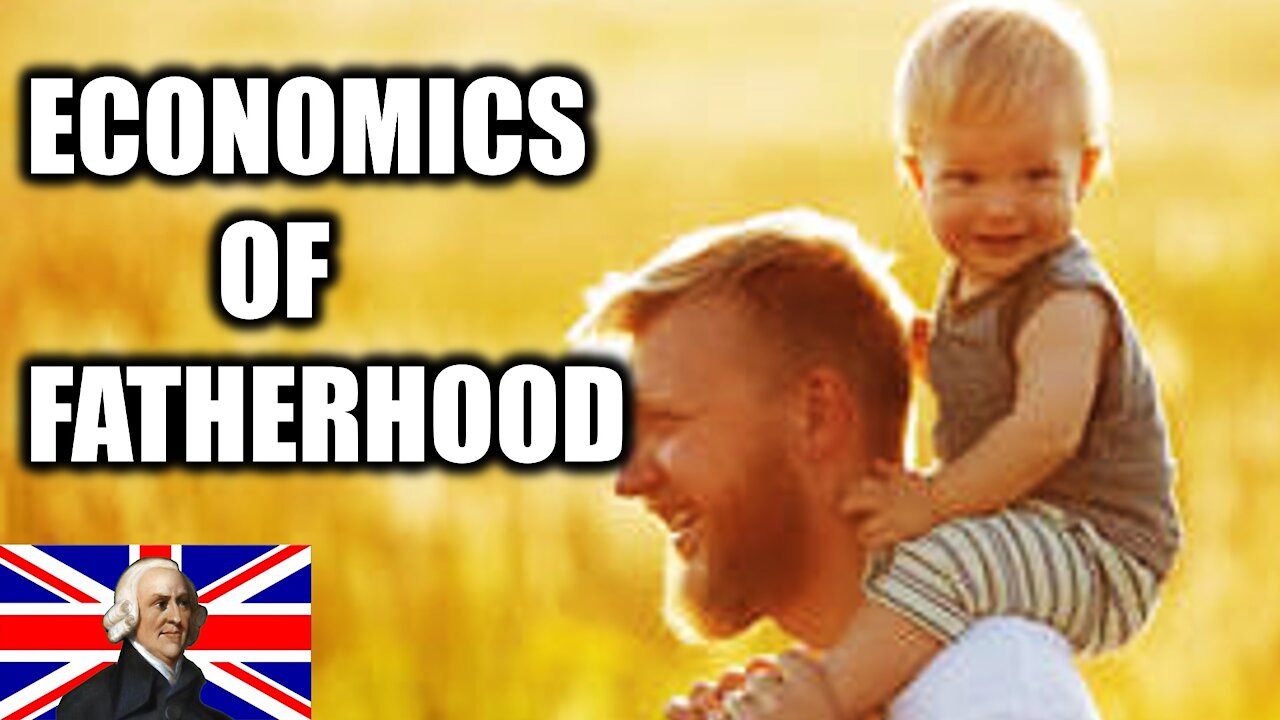Premium Only Content

Economics of Fatherhood | Father's Day, 100 Subscriber Special, 2020, Fathers, marriage, children
Happy Father’s Day. Today we are going to explore the economics and data behind Fatherhood and how it affects society going forward. There has been an increase in the number of single parent homes in the West, but I chose to focus on fatherhood as most absentee parents are fathers. In the present day, according to a NCBI sample 24.1% of fathers live away from one or more children. This was provided to me by the lovable centrist Layman whose Youtube channel and twitter are linked below so please check it out. This can be attributed to the high out of wedlock birth rates with more millennials than boomers having a baby first before marriage. This is interesting as 86% of millennials who do marry first before having kids end up in the upper or middle-income distribution. The same cannot be said for millennials had a baby before marriage where 47% of them became poor. And poverty doesn’t seem to be a blockade to benefitting from marriage as 71% of millennials who marry first and growing up in the bottom third of the income distribution achieved upper of middle-income status later in life.
Sources:
National Health Statistics Report:
https://www.cdc.gov/nchs/data/nhsr/nhsr071.pdf
AEI Income Mobility Study/Millennial Success Report:
https://www.aei.org/wp-content/uploads/2017/06/IFS-MillennialSuccessSequence-Final.pdf?x91208
Out of Wedlock Article:
https://cis.org/Camarota/Births-Unmarried-Mothers-Nativity-and-Education
BBC article:
https://www.bbc.co.uk/news/education-47057787
Fatherly article:
https://www.fatherly.com/health-science/science-benefits-of-fatherhood-dads-father-effect/
NCBI study:
https://www.ncbi.nlm.nih.gov/pmc/articles/PMC2930824/
-
 LIVE
LIVE
Barry Cunningham
4 hours agoPRESIDENT TRUMP HAS DESTROYED WOKEISM! DEMOCRAT PARTY IN SHAMBLES!
6,531 watching -
 LIVE
LIVE
The Pascal Show
2 hours ago $0.06 earnedBREAKING! Active Shooter In Midtown Manhattan NYC Multiple People Shot!
103 watching -
 10:25
10:25
MattMorseTV
7 hours ago $4.46 earnedVance just DROPPED a NUKE.
6.58K27 -
 LIVE
LIVE
Jokeuhl Gaming and Chat
4 hours agoDARKTIDE - Warhammer 40k w/ Nubes and AoA
56 watching -
 LIVE
LIVE
Shoriantrax
1 hour agoLIVE: Hardcore Chaos in Tarkov – Loot, Die, Repeat!
7 watching -
 LIVE
LIVE
John_Goetz
2 hours agoJohn Gets Gaming - Medal of Honor Vanguard Part 2
23 watching -
 1:29:09
1:29:09
RiftTV
3 hours agoSydney Sweeney Spreading RACIST Propaganda? | The Rift | Guest: Braeden Sorbo + Sarah Stock
23.8K6 -
 LIVE
LIVE
VapinGamers
2 hours ago $0.01 earnedDestiny 2 - The Premium Destiny 2 Experience with the Community! - !rumbot !music
10 watching -
 LIVE
LIVE
We Like Shooting
15 hours agoWe Like Shooting 621 (Gun Podcast)
70 watching -
 2:06:45
2:06:45
PudgeTV
7 hours ago🔵 Mod Mondays Ep 69 | Grimm Hollywood - The 3k on Mod Mondays
5.62K3